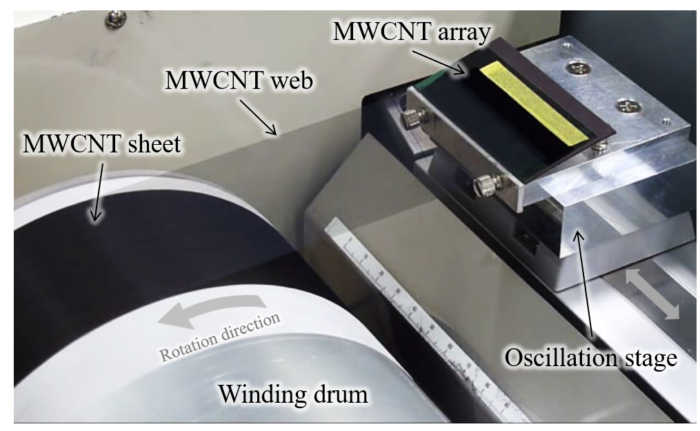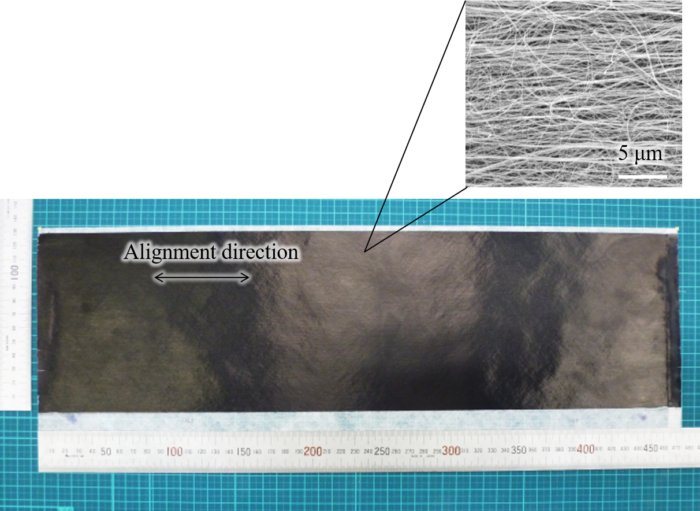By stacking CNT webs, a unidirectionally oriented CNT sheet is formed. Since the spinning performance is high, the web can be pulled out at a speed of 10 m/s or more, and a CNT sheet can be easily formed in a short time. The CNTs are bonded only by van der Waals force, and it is a stable, self-supporting sheet without using a binder. Since there is essentially no size limitation, CNT sheets of A4 size can be easily formed, as shown in the figure. The thickness of the CNT sheet is controlled by changing the amount of wound CNT. When 10 layers of the web are stacked, the thickness is about 1-5 μm. The weight density is about 0.5-1 g/cm3, depending on the degree of CNT aggregation.


Electrical conductivity
CNTs have an orientation. Therefore, it shows remarkable anisotropy in electric conduction characteristics, thermal conduction characteristics, and mechanical characteristics. The parallel and orthogonal resistivity of the CNT sheet is 2.5×10-3 Ωcm (conductivity 400 S/cm) and 1.8×10-2 Ωcm (55.6 S/cm), respectively. The electrical conductivity of multi-walled CNTs is greatly affected by the CNT diameter. In the multi-walled CNT case, the conductivity in the graphene plane is higher than that between the planes, so the outer layer is considered the main conductive layer.
Thermal conductivity
The thermal conductivity of the CNT sheet is similar to that of electrical conductivity. The thermal diffusivity, α, in the in-plane direction of the film sample was measured by the optical alternating current method, and the thermal conductivity K was obtained from the density, ρ, and the specific heat C, as K = α ρ C. The thermal diffusivities in the CNT array direction and the orthogonal direction were 1.22 × 10-4 m2/s and 1.50 × 10-5 m2/s, respectively. From this, the thermal conductivity is estimated to be 70 W/m·K and 8.6 W/m·K in each direction. The value is high compared to the reported isotropic bucky paper, but it is extremely low compared to the case of individual CNTs. Since the heat conduction mainly occurs by phonon conduction, it is considered that the contribution of the inner layer is small and the thermal resistance of the CNT interface appears in the macro thermal conductivity of the CNT sheet.
Tensile property
The tensile strength of the CNT sheet is about 76 MPa in the parallel direction. It is as strong as aluminum. Although bonded only by van der Waals force, the bond strength between CNTs is large due to the large aspect ratio of CNTs, and the strength as a macroscopic sheet is at a level that can be sufficiently utilized as an industrial material. Since CNTs are easily cleaved in the direction perpendicular to the orientation, some caution is required in handling.
